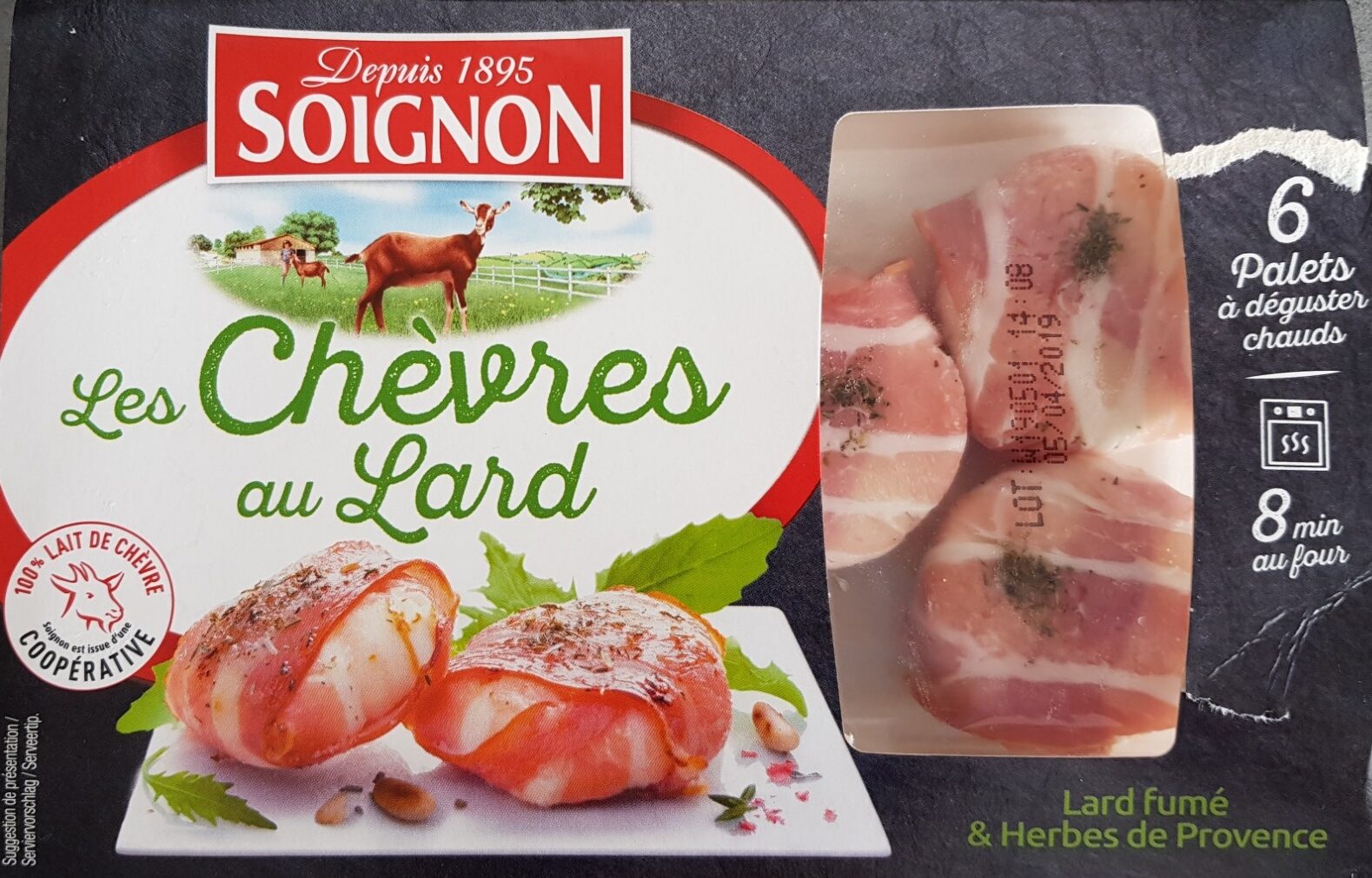Les Chèvres au Lard - Soignon - 150 g
This product page is not complete. You can help to complete it by editing it and adding more data from the photos we have, or by taking more photos using the app for Android or iPhone/iPad. Thank you!
×
Barcode: 3523230016131 (EAN / EAN-13)
Common name: Fromage de chèvre décongelé au lait pasteurisé enrobé de lard fumé décongelé
Quantity: 150 g
Packaging: Plastic
Brands: Soignon
Categories: Dairies, Fermented foods, Fermented milk products, Snacks, Cheeses, Salty snacks, Appetizers, Goat cheeses
Labels, certifications, awards:
Green Dot, fr:Lait de chèvre, fr:Origine UE
Manufacturing or processing places: La Chapelle-Thireuil
Traceability code: FR 79.077.001 CE - Chapelle-Thireuil (Deux-Sèvres, France)
Stores: Magasins U
Countries where sold: France
Matching with your preferences
Environment
Carbon footprint
Packaging
Transportation
Report a problem
Data sources
Product added on by date-limite-app
Last edit of product page on by naruyoko.
Product page also edited by fanfan54, kiliweb, magasins-u, nutravalia, openfoodfacts-contributors, packbot, quechoisir, roboto-app, tacite-mass-editor, yuka.U1lzeEZaMDV2ZUJWbS9KbCtFanU4OU4vMXB1SloxUHBDK3M3SUE9PQ, yuka.ZmJrZ0FKdGEvdHdRdXNNMzN4SHA5STRxNTZUemJWS3ZBY1V3SVE9PQ.











